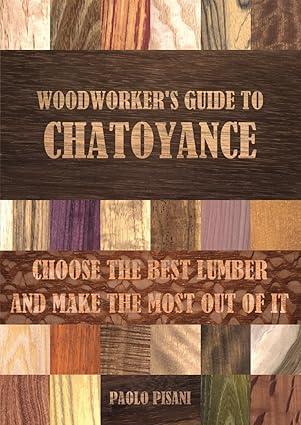What is the best finish to enhance Maple chatoyance?
Let’s use the PZC method and see what comes out.
We tested these finishes:
Blonde Dewaxed Shellac “Light” (1 part in 13 parts of Alcohol)
Blonde Dewaxed Shellac “Medium” (2 parts in 13 parts of Alcohol)
Blonde Dewaxed Shellac “Dense” (4 part in 13 parts of Alcohol)
“Blonde Oil” from a local brand
“Red Oil” from a local brand
Transparent Flooring Grain Filler from a known European brand.
Each test was carried out twice: one specimen starts with 180 grit sanding (PZC data in red below) and one specimen start with 800 grit sanding (PZC data in violet below). All samples were taken from a single sheet of plain European Maple veneer.
Tables below summarize the results of some different finishing sequences we tested.
| Sequence 1 | PZC (180 grit initial sanding) | PZC (800 grit initial sanding) |
| Sanding | 9.5 | 11.5 |
| Light Shellac | 13.9 | 16.6 |
| Light Shellac | 15.6 | 18.2 |
| Light Shellac | 16.6 | 18.5 |
| Light Shellac | 16.6 | 18.7 |
No further enhancement is obtained after the third layer of light shellac; sanding to a finer grit prior to finishing yields better results.
| Sequence 2 | PZC (180 grit initial sanding) | PZC (800 grit initial sanding) |
| Sanding | 9.5 | 11.8 |
| Medium Shellac | 15.9 | 18.6 |
| Medium Shellac | 17.1 | 19.0 |
| Medium Shellac | 17.6 | 19.3 |
| Medium Shellac | 17.2 | 19.0 |
Again, layers after the third one appear to be of no use and sanding to a finer grit prior to finishing yields better results.
| Sequence 3 | PZC (180 grit initial sanding) | PZC (800 grit initial sanding) |
| Sanding | 9.3 | 13.0 |
| Dense Shellac | 17.4 | 20.1 |
| Dense Shellac | 17.5 | 19.7 |
| Dense Shellac | 17.5 | 19.9 |
With Dense Shellac layers after the first one appear to be of no use. Again sanding to a finer grit prior to finishing yields better results.
| Sequence 4 | PZC (180 grit initial sanding) | PZC (800 grit initial sanding) |
| Sanding | 9.5 | 11.6 |
| Light Shellac | 14.3 | 16.6 |
| Medium Shellac | 17.5 | 17.8 |
| Dense Shellac | 18.2 | 18.2 |
| Dense Shellac | 18.1 | 17.8 |
A “progressive” approach like this one yielded some advantage on the 180-grit specimen, while results with the 800-grit specimen are even worse than those obtained with previous sequences.
| Sequence 5 | PZC (180 grit initial sanding) | PZC (800 grit initial sanding) |
| Sanding | 9.8 | 11.5 |
| Blonde Oil | 17.1 | 17.8 |
| Blonde Oil | 18.2 | 18.4 |
| Blonde Oil | 18.9 | 18.5 |
| Blonde Oil | 18.2 | 18.4 |
When using this oil, three coats are enough. In addition, sanding to a finer grit provides no advantage.
| Sequence 6 | PZC (180 grit initial sanding) | PZC (800 grit initial sanding) |
| Sanding | 9.2 | 11.3 |
| Medium Shellac | 17.5 | 18.8 |
| Red Oil | 17.9 | 19.2 |
| Red Oil | 18.5 | 19.3 |
| Red Oil | 18.3 | 19.3 |
Again three coats are enough, but here sanding to a finer grit provides some advantage.
| Sequence 7 | PZC (180 grit initial sanding) | PZC (800 grit initial sanding) |
| Sanding | 9.2 | 11.1 |
| Grain Filler | 15.3 | 15.7 |
| Grain Filler | 15.0 | 15.3 |
| Grain Filler | 14.8 | 15.0 |
With this Grain filler layers after the first one have no positive effect on chatoyance, and initial sanding to a finer grit is also of little use.
Conclusions
Among the tested finishing sequences, the best ones for chatoyance appear to be Medium Shellac (3 coats) and Red Oil (3 coats), both providing better results with finer grit initial sanding.
Help us finding the best coat – get in touch (chatometry@gmail.com) and send us coated wood samples or finish samples.




Want to know more? Get Woodworker’s Guide to Chatoyance!

Available on Amazon in 12 countries – just click on your flag below…
… and enjoy the read!











